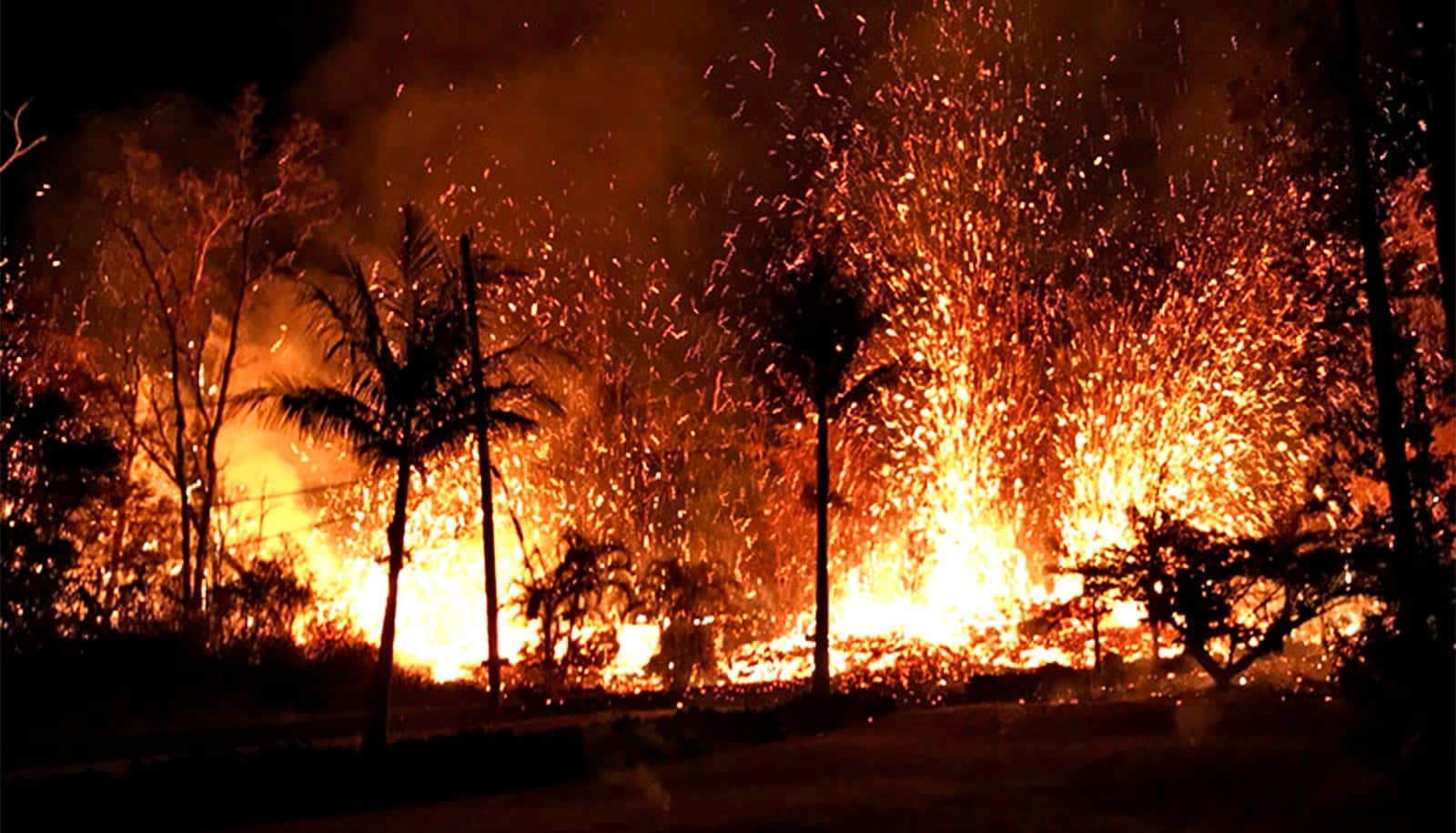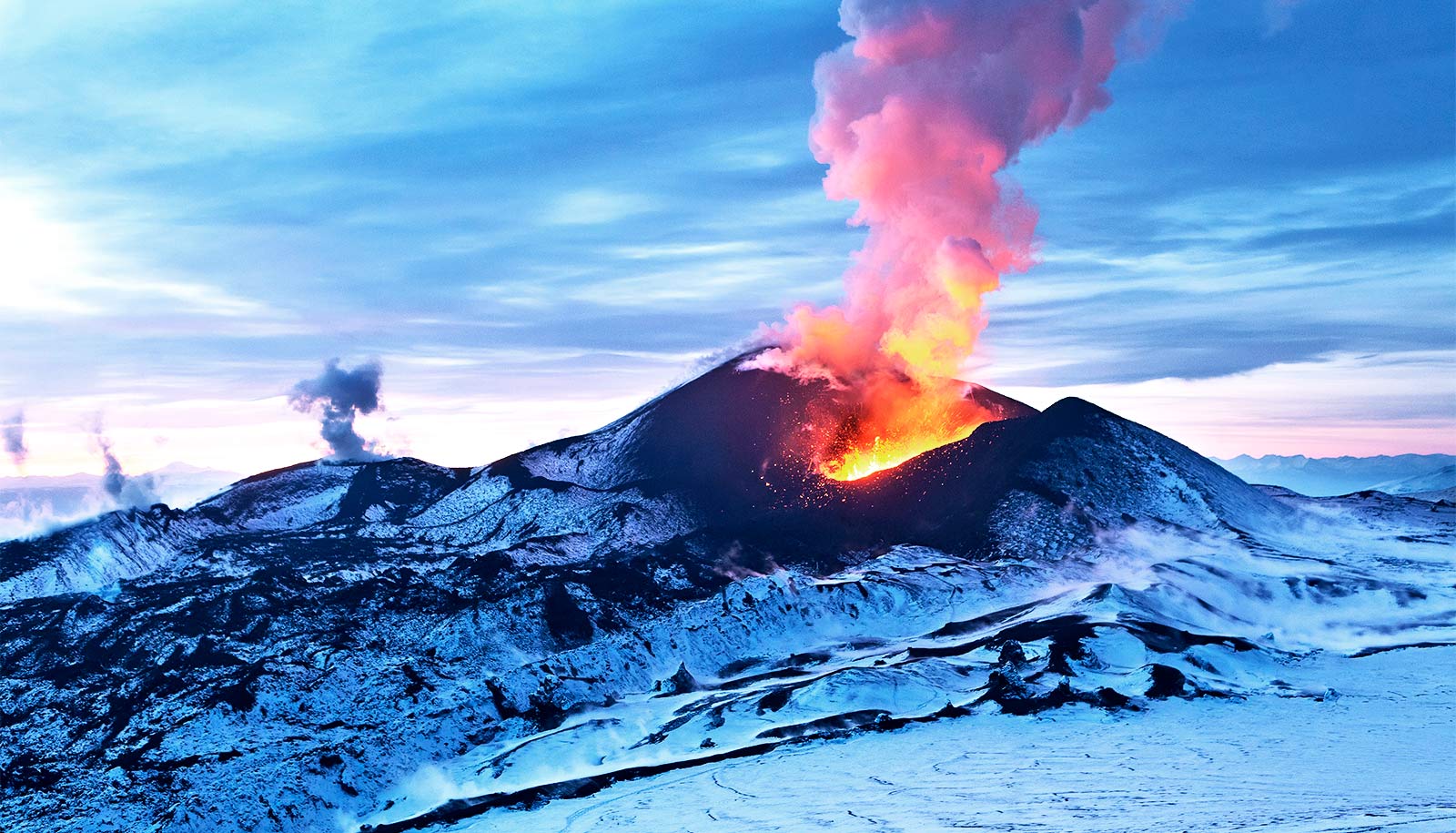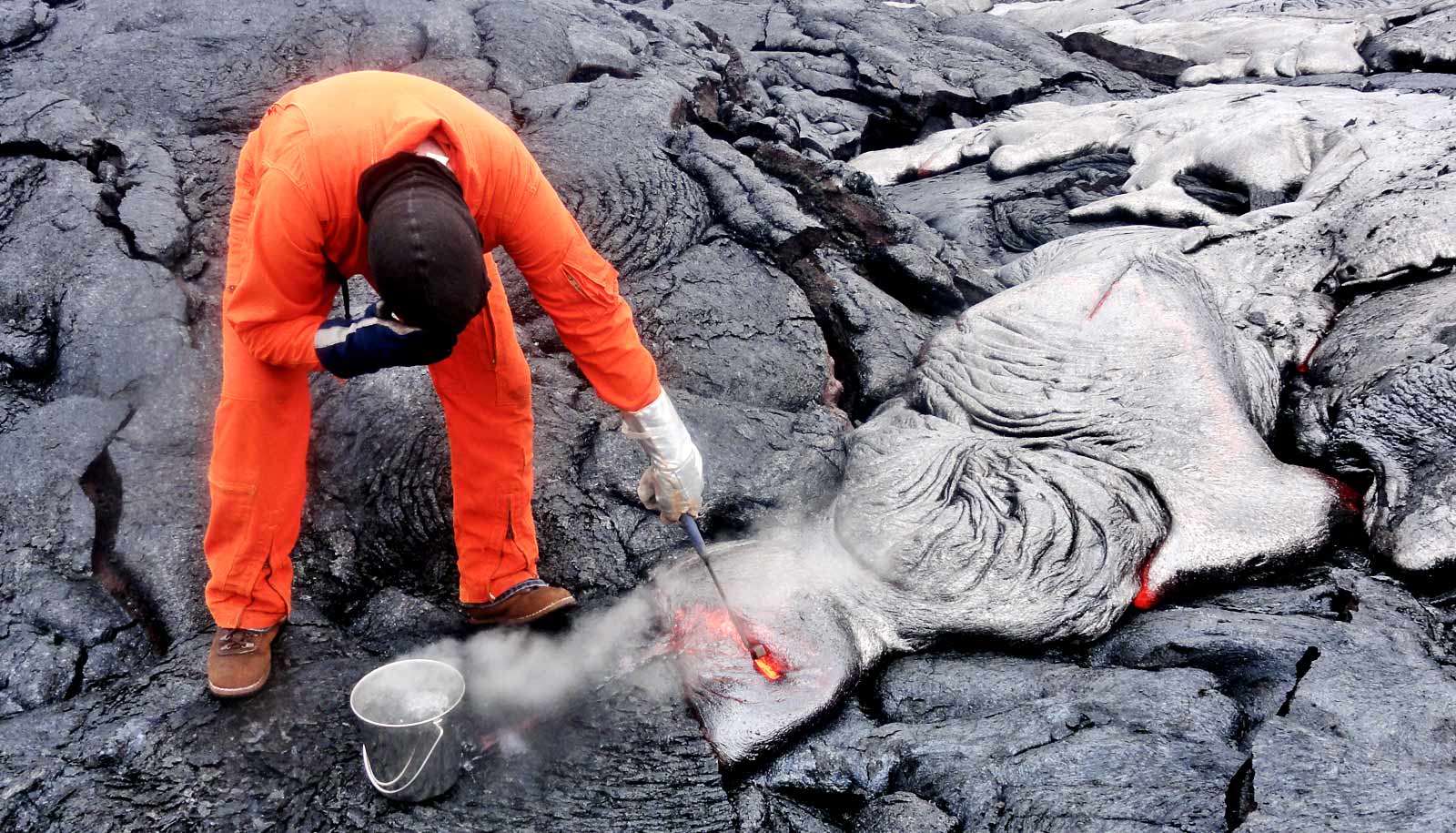It may be possible to pick up signs that volcanoes are about to erupt, according to new research.
In a study of Hawaii’s Kīlauea volcano, researchers report that pressure changes in the volcano’s summit reservoirs helped explain the number of earthquakes—or seismicity—in the upper East Rift Zone. This zone is a highly active region where several eruptions have occurred over the last few decades, including a spectacular one in 2018.
“We are interested in looking at the mechanisms that trigger seismicity at a very active and dynamic volcano, like Kīlauea Volcano in Hawaii,” says Christelle Wauthier, an assistant professor of geosciences and the Institute for CyberScience at Penn State. “There are several physical processes that can drive seismicity and, in this study, we were trying to find out which one was the most likely.”
Building stress in the system
According to Wauthier, the pressure changes that occur in the summit reservoir—an underground chamber hosting hot magma—causes stresses in the rocks and ground that surround the magma, even not at its immediate proximity. These stress changes can trigger small magnitude volcano-tectonic earthquakes, most of the time imperceptible to humans but that are picked up by the sensitive seismic equipment that monitor the volcano. This seismic activity, then, may better predict magma movements and resulting eruptions.
The researcher’s work challenges a previous theory that suggested the volcano’s gradual slip toward the sea triggered the seismic activity in the rift zone. The southern flank of Kīlauea is gradually moving toward the ocean at about six centimeters a year.
While most people picture volcanoes violently erupting at their summits, Kīlauea is different because its sprawling system of underground tunnels and chambers where magma flows results in eruptions that can happen at various points miles from its summit. When magma travels out of these chambers and onto the Earth’s surface, it is called lava.
“Underneath, there is a conduit system that is extremely long—we’re talking 20 miles or so,” says Wauthier. “And it’s just like the plumbing in a house. A volcano’s plumbing system can be plugged up or blocked and that just might lead to an eruption.”
Forecasting volcanoes
By better understanding the forces that are triggering seismicity, scientists monitoring seismic activity at other volcanoes could predict future eruptions more accurately, according to the researchers. Because Kīlauea is one of the world’s most closely and densely monitored volcanic systems, it serves as a living laboratory to study volcanic activity that can be applied to study other volcanoes, adds Wauthier.
“While there are only a few volcanoes that are as highly instrumented as Kīlauea, which has a super-dense seismic network and GPS, so it’s very well-monitored, but other volcanoes are not monitored like that,” says Wauthier. “However, for volcanoes that have good seismic networks—and there are many of them—you can apply the exact same approach as this one to look if your volcano-tectonic seismicity—these small earthquakes—are due to magma being injected into a magma reservoir, or due to something else.”
The team used both seismic and satellite imagery data from mid- to late-2007 for the study. Seismic analysis was conducted with data collected on the upper East Rift Zone from the US Geological Survey Hawaiian Volcano Observatory (HVO).
Using information from global positioning satellites, which HVO also collected, the researchers were able to analyze physical changes to the mountain’s shape and pay particular attention to ground surface deformations at the summit. They then looked at how these factors correlated with models of the stress changes that inflations and deflations of the summit reservoir cause.
By carefully analyzing movements to a volcano’s summit reservoir, researchers may be able to better predict when and where eruptions are likely to occur, then, according to the researchers. However, more work needs to be done, says Wauthier. Future research plans include looking at seismic activity and ground deformation data from other time periods of the volcano.
“We’ve been looking at the period in 2007, but that’s just a subset,” says Wauthier. “We could imagine just looking at a longer time period where we have other inflation-deflation events happening and see if we still conclude that same thing that it’s magma reservoir inflating that triggers the seismicity. It is likely that over the course of a long-term eruption like the 1983-2008 one, things are changing.”
The research appears in Geology.
Additional researchers from the Carnegie Institution for Science and the Yellowstone Volcano Laboratory of the US Geological Survey contributed to the work.
Source: Penn State



